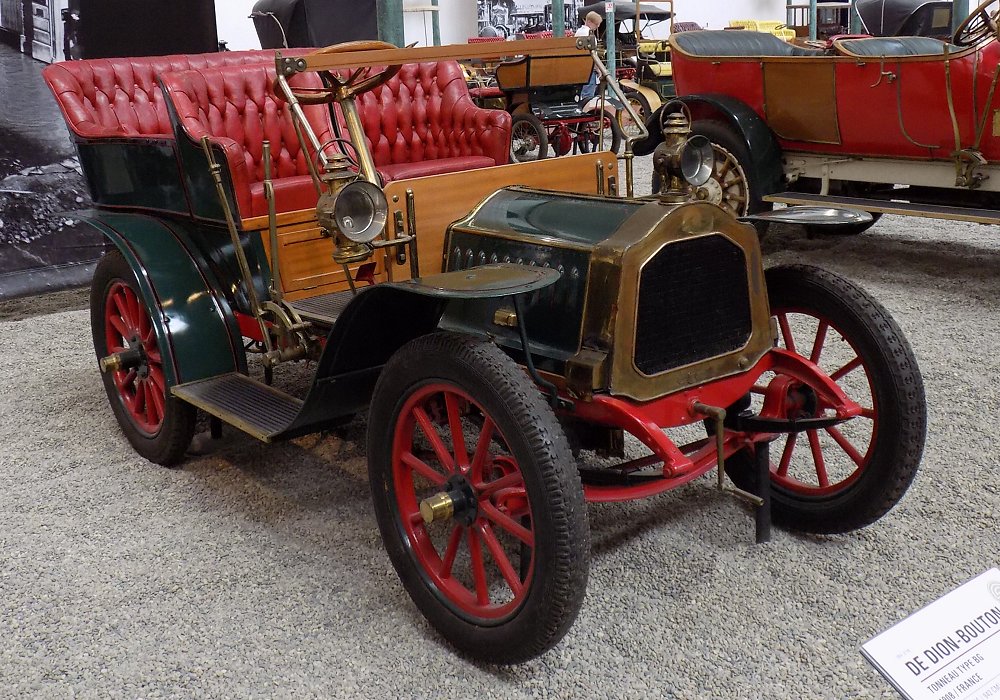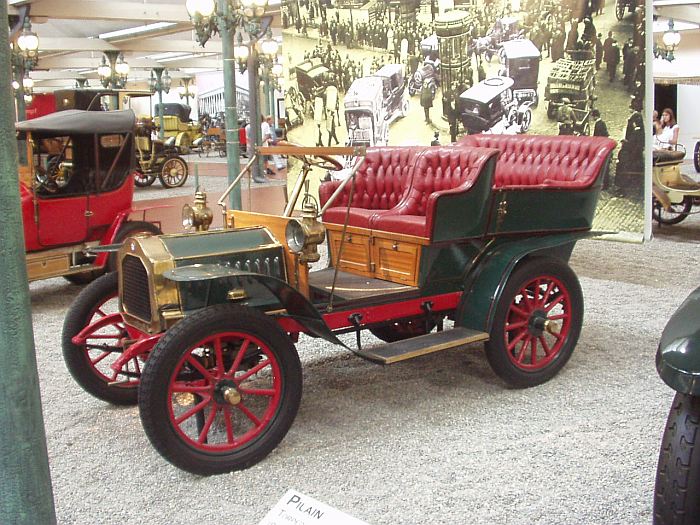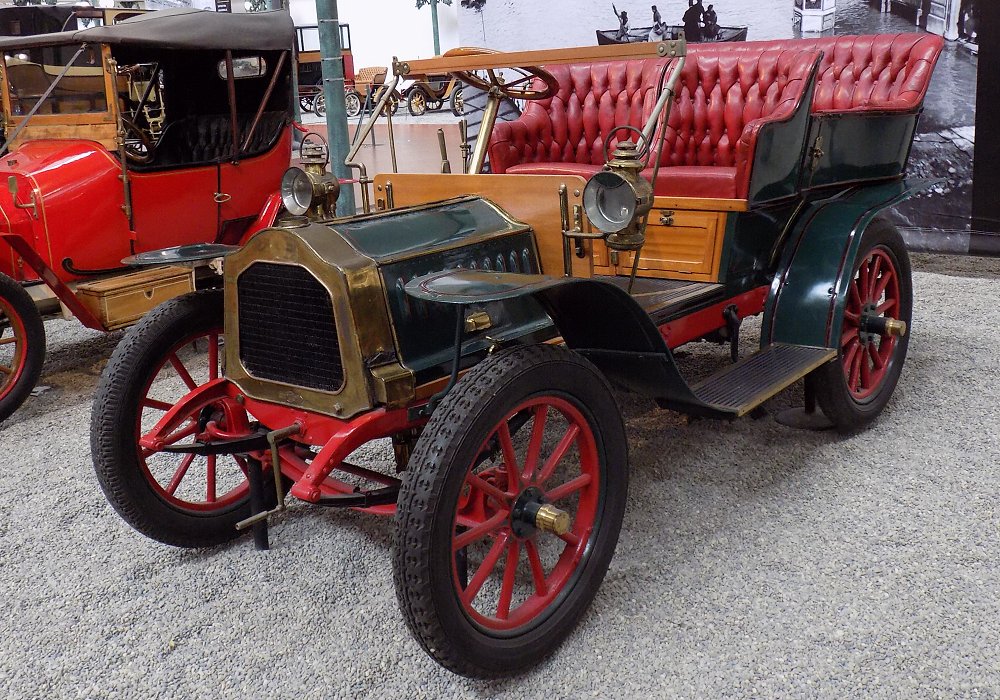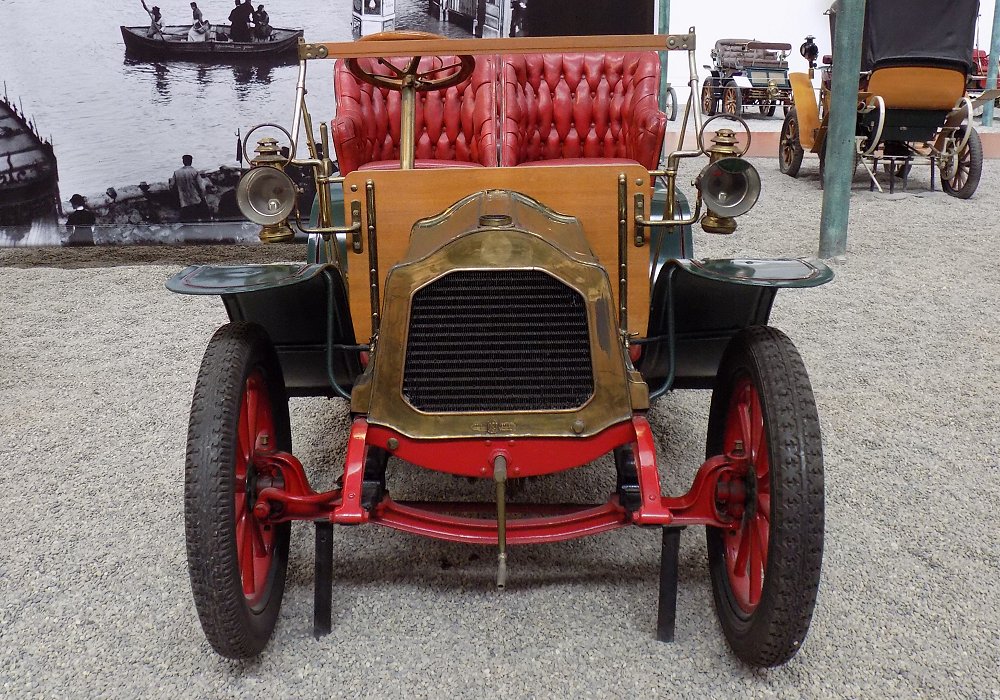Description
The De Dion-Bouton Type BG Tonneau was a distinguished touring car produced in the early 1910s, representing a period of growth and refinement for the French manufacturer. By the time the Type BG was introduced, De Dion-Bouton had already moved well beyond its roots in single-cylinder tricycles and lightweight runabouts, and was producing fully-fledged automobiles aimed at a wealthier clientele who demanded more comfort, space, and performance.
The Type BG was equipped with a four-cylinder, front-mounted petrol engine, typically displacing between 2.5 and 3.5 litres and delivering around 15 to 20 horsepower. This engine was part of De Dion-Bouton’s advanced lineup, featuring water cooling, magneto ignition, and side-valve configuration. It was engineered for smooth and quiet operation, ideal for the long-distance touring that tonneau-bodied cars were often used for. The engine’s dependable performance made it especially attractive to buyers who wanted a balance of elegance and usability.
Power was transmitted to the rear wheels via a four-speed manual gearbox and a shaft drive—an arrangement that by this point had become standard for De Dion-Bouton’s larger models. The use of shaft drive, instead of the older chain system, improved both reliability and ease of maintenance. The Type BG was capable of reaching speeds of approximately 60 km/h, more than sufficient for the road conditions of the period.
The tonneau body style was a popular configuration for touring cars, especially in France and Britain. The design featured a front bench seat for the driver and a passenger, and a rear passenger compartment that was either side- or rear-entrance, depending on the coachbuilder’s approach. The rear seating could accommodate two to four passengers and was often upholstered in leather, with additional comfort features like folding armrests, footrests, and sometimes a removable canopy or convertible roof for weather protection.
The chassis was robust and constructed from pressed steel, with semi-elliptic leaf springs at both the front and rear axles. Solid axles, wooden artillery wheels, and pneumatic tires helped provide a relatively smooth and stable ride over rough early roads. Steering was typically worm and sector, providing accuracy and a well-weighted feel. Braking was handled through a transmission brake and mechanical rear wheel drums, which, while modest by modern standards, were adequate for the car’s performance.
The visual impression of the Type BG Tonneau was one of formal elegance combined with practicality. The bodywork was often adorned with polished brass fittings, including headlamps, horn, and radiator trim, while the coachwork itself was finished in rich paint schemes with contrasting pinstripes. Interiors could be customized depending on the customer’s preferences, and many examples were bodied by prominent coachbuilders who tailored the car to individual taste.
The De Dion-Bouton Type BG Tonneau was aimed at well-to-do families and touring enthusiasts who valued both technical excellence and comfort. It captured the essence of early Edwardian motoring: refined, reliable, and capable of covering significant distances in style.
Today, surviving examples of the Type BG Tonneau are rare and treasured by collectors. They represent a critical phase in automotive history when cars began to adopt the form, function, and usability that would define the automobile for decades to come.



